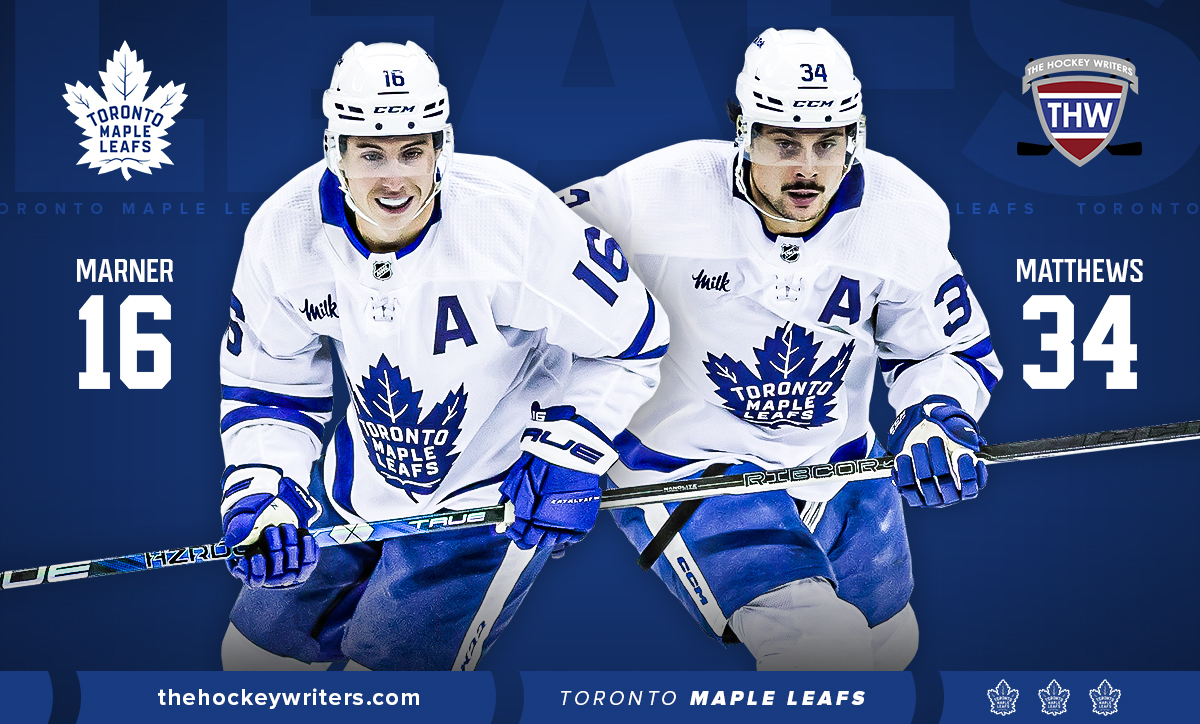Toronto Maple Leafs fans are far from happy. They seem to be pointing all sorts of fingers. However, the big bogeyman continues to be an unbalanced salary structure that continues to pay a few players a ton of money and has seemed to get in the way of postseason success. The second problem for fans is that the team doesn’t want to risk fixing that problem. On the surface, the problem seems easy enough. Dump one of the bigger salaries and use the money to fill an obvious hole on the team’s roster.
Related: Tim Horton: A Legacy of Hockey, Donuts, & Coffee
Yet, the team seems reluctant to take risks, especially when making tough decisions. One prime example was their choice to hold onto Mitch Marner last season. While Marner is an undeniably skilled player, he also comes with some baggage—notably his agent, Darren Ferris, who has a reputation for tense and overly-dramatic contract negotiations. The team had a chance to trade Marner, potentially addressing other needs, but they chose to play it safe and keep him.
Suppose Marner eventually tests free agency and finds a less-stressful environment where he can be the star rather than playing second fiddle to Auston Matthews. In that case, the Maple Leafs might be forced to do what fans thought they should have done previously.

In the end, that scenario might solve the problem. The team would gain substantial salary cap relief, which could be used to target their more pressing needs—likely a young, top-tier defenseman. However, this scenario would only unfold if Marner forces their hand, leaving the Maple Leafs with little choice but to act. Currently, the team’s hands are tied because Marner holds the cards. However, the more significant issue is that if the team’s hands were untied, it wouldn’t grab the chance to do anything.
Could the Maple Leafs Leadership Structure Be Problematic?
This brings us to a critical question: Why? I wonder if it’s a leadership issue. From a leadership perspective, could the Maple Leafs’ leadership structure have too many voices that hamper the team’s decision-making process? Riskier decisions might have been easier to make in the past or on teams where a single leader calls the shots.
When leadership is more centralized, there’s a more precise direction, and decisions are made swiftly. However, if the Maple Leafs operate in a “groupthink” environment, where multiple voices weigh in and second-guess each other, it could lead to excessive caution. In such a setting, someone might raise a “what if?” that derails bolder plans. Although I do not know what happens in the Maple Leafs’ boardroom, I have been part of high-level university or governmental committees where groupthink has constipated decision-making. This leadership dynamic might prevent the Maple Leafs from making the tough calls that could push the team toward more potential success.
Related: Toronto Maple Leafs 2024-25 Milestone Watch
Is it possible the Maple Leafs are being held back not by a lack of ideas but by too many competing ones? If too many voices are trying to steer the ship, is it time for the team to reconsider its approach and streamline its leadership structure? After all, in a sport where decisive action can be the difference between victory and defeat, hesitation could be the Leafs’ Achilles heel.
The Maple Leafs Talk a Bigger Game than They Play, But Why?
The Maple Leafs’ front office has been under scrutiny recently for talking a bigger game than they play. While I have no reason NOT to believe second-year general manager (GM) Brad Treliving when he says, “Everything is on the table,” I wonder what happens when those things become agenda items for a specific conversation.

In a recent confidence survey by The Athletic, the Maple Leafs’ near-bottom ranking reflects growing concerns among fans and analysts alike. I’m wondering if the team’s reluctance to take risks might be its aforementioned Achilles’ heel. Is the team’s cautious approach holding them back from true success, or is it a wise strategy that protects the franchise from potential pitfalls?
The “Shanaplan” Was at Least Creative and Did Something
When Brendan Shanahan introduced the “Shanaplan,” it laid out a bold vision for the Maple Leafs’ future. The idea was to build a young, dynamic core that could lead the team to sustained success. Like him or not, then-Maple Leafs GM Kyle Dubas made logical moves to create that vision. Fast-forward to today, and that once-exciting (if problematic) plan seems to have stagnated. The Maple Leafs’ offseasons have become predictable, focusing on signing a few safe bets rather than making bold moves that could shake up the roster and potentially lead to a breakthrough.
Related: Maple Leafs’ 2020-21 Are the Next Step in the Shanaplan
Dom Luszczyszyn, in his analysis, captured the sentiment perfectly when he wrote, “A lot of what the Leafs do feels safe, boring, and bland. It’s as if the decisions are made via a focus group to minimize risk — hit a few singles instead of swinging for the fences.” This description resonates with Toronto fans, some of whom see the team as paralyzed by the fear of making mistakes, preferring to accept mediocrity rather than taking a gamble that could lead to greatness or disaster (from “NHL front-office confidence rankings, 2024: How fans feel about every team,” Dom Luszczyszyn, The Athletic, 06/08/2024).
The Upsides of a Risk-Averse Strategy – Avoiding a Huge Mistake
The Maple Leafs’ conservative approach has clear benefits. By avoiding big gambles, the team ensures stability and consistency. They have remained competitive in the regular season, consistently making the playoffs, and have developed a core group of forwards among the best in the league.
For the franchise, this approach minimizes the risk of catastrophic failures. Big gambles can backfire, leaving teams in worse shape than before. The Maple Leafs’ strategy protects them from the type of boom-or-bust scenarios that have crippled other teams. Playing it safe might be the intelligent choice in a market as intense as Toronto, where fans and media quickly react to every move.
The Downsides of a Risk-Averse Strategy – Missing the Big Win
However, this risk-averse approach also has considerable downsides. By not swinging for the fences, the team might miss the opportunity to achieve the ultimate goal: winning the Stanley Cup. In a league where fortune often favors the daring, Toronto’s reluctance to make significant changes could keep them from breaking through in the postseason.

Fans are growing impatient with the status quo. The team’s core has remained largely intact despite repeated playoff failures. Treliving, who had his chance last season, opted to keep Marner and extend William Nylander instead of making significant changes. Now, the Maple Leafs are heading into another season with the same core, hoping for a miracle run that feels increasingly unlikely. Who knows? A Stanley Cup could happen with this group.
The Real Maple Leafs Achilles’ Heel?
The Maple Leafs’ fear of making mistakes might ultimately be their undoing. Making daring changes is tough, and the organization seems unwilling to do the hard things necessary to take the next step. Instead, they appear content to wait and hope for a postseason where everything finally goes their way, even if history and the odds suggest that’s unlikely.
Related: Maple Leafs Betting on a Calle Järnkrok Bounce-Back
If this strategy fails again, will the consequences be dire? The front office and coaching staff might not survive another playoff disappointment. But even more concerning is the possibility that the Maple Leafs will continue down this path of risk aversion, trapped in a cycle of “good-but-not-great” seasons that never lead to the championship that fans so desperately crave.
Ultimately, the Maple Leafs’ Achilles’ heel might not be a lack of talent, but a lack of boldness.
